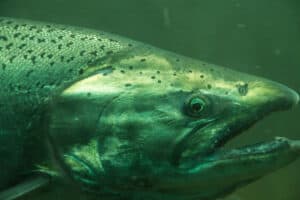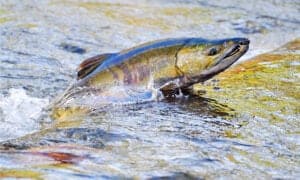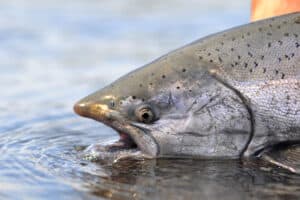There are seven Pacific salmon species and one Atlantic salmon species found in the Pacific and Atlantic Oceans tributaries. Most species are anadromous, meaning they’re born in rivers and streams, travel out to sea, and then back to freshwater to spawn.
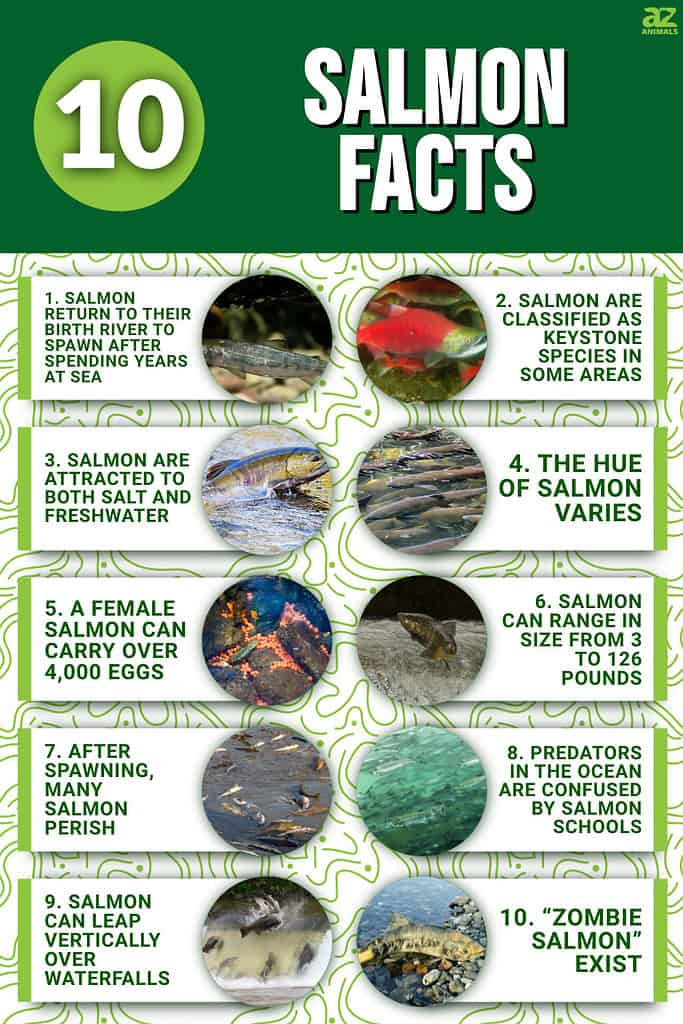
Salmons have streamlined, sleek bodies that change color throughout their lives. The ‘Saber-Tooth Salmon’ is the oldest known salmon species in North America, with fossils going back up to 7 million years. Continue reading to learn fascinating facts about salmon.
1. Salmon Return to Their Birth River to Spawn after Spending Several Years at Sea
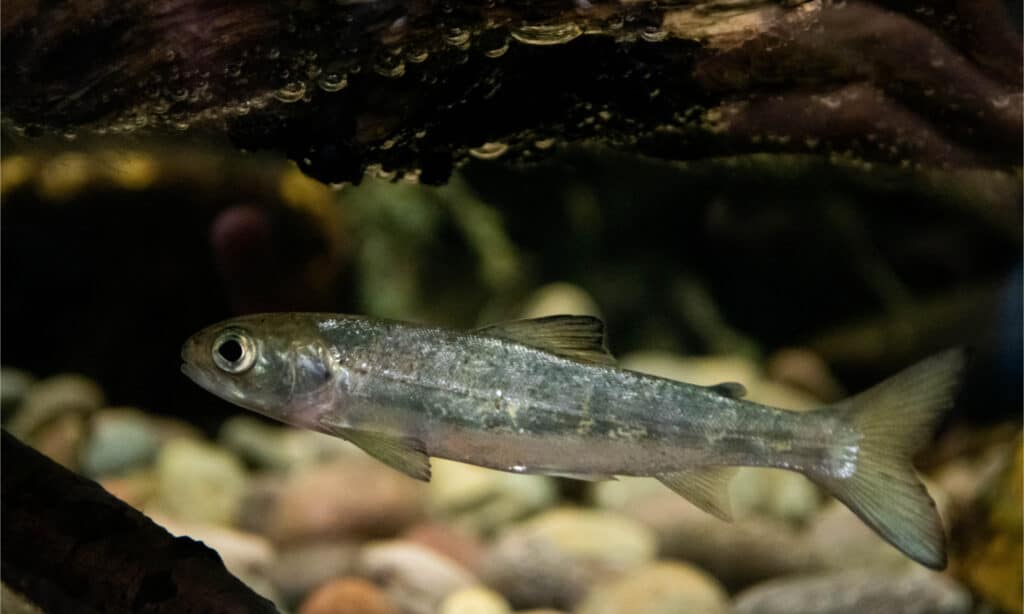
Young salmon are called smolts after they turn silvery and migrate to the ocean.
©jack perks/Shutterstock.com
Many ideas exist to explain how they can do so. The salmon is said to navigate using the Earth’s magnetic field, while others claim they use their keen sense of smell. Changes in habitat and losses to habitat can influence the salmon’s capacity to return to their original spawning rivers, putting future salmon generations at risk.
2. Salmon are Classified as Keystone Species in Some Areas
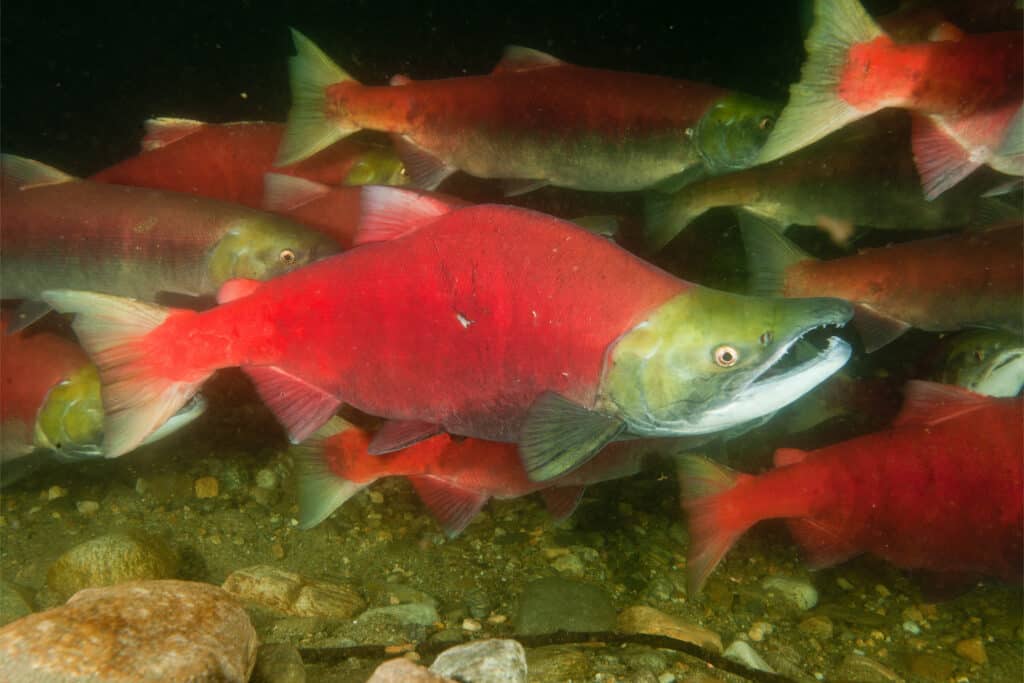
Sockeye salmon are a keystone species in Alaska’s Bristol Bay.
©Beat J Korner/Shutterstock.com
Keystone species are essential to the ecosystem’s survival. In Alaska’s Bristol Bay, for example, the sockeye salmon is a keystone species. Salmon carcasses decay and fertilize the park’s boreal woodlands and river banks as they spawn and begin to die. The nutrients are subsequently passed on to the many creatures that inhabit and prosper in the area by the plants.
3. Salmon are Attracted to Both Salt and Freshwater
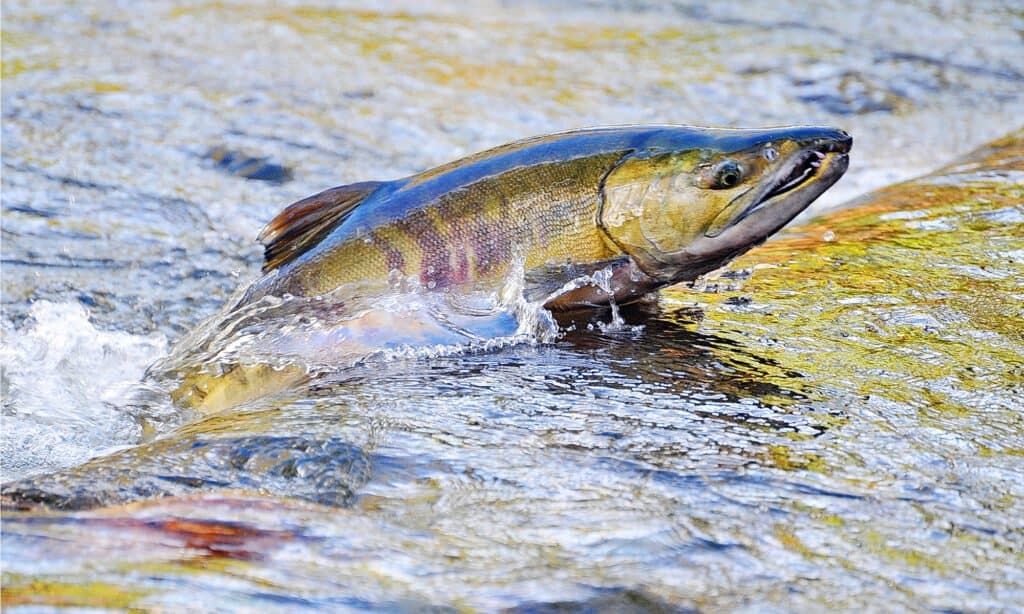
Since they are anadromous, salmon can survive across salt and freshwater.
©The Old Major/Shutterstock.com
Salmon are “anadromous,” meaning they can survive across salt and freshwater. They are born in freshwater and live a few months to a few years there before going out to the ocean, depending on the species.
They return to freshwater to spawn when it’s time. Very few fish can endure such vast salinity fluctuations, and they would perish if they traveled between saline and freshwater like salmon. Saltwater fish can have their cells explode when they come into contact with fresh water.
When freshwater fish are subjected to salt water, osmoregulation occurs, causing their cells to shrivel. The salmon, fortunately, has some remarkable behavioral and physiological adaptations that enable them to thrive in both settings.
4. The Hue of Salmon Varies
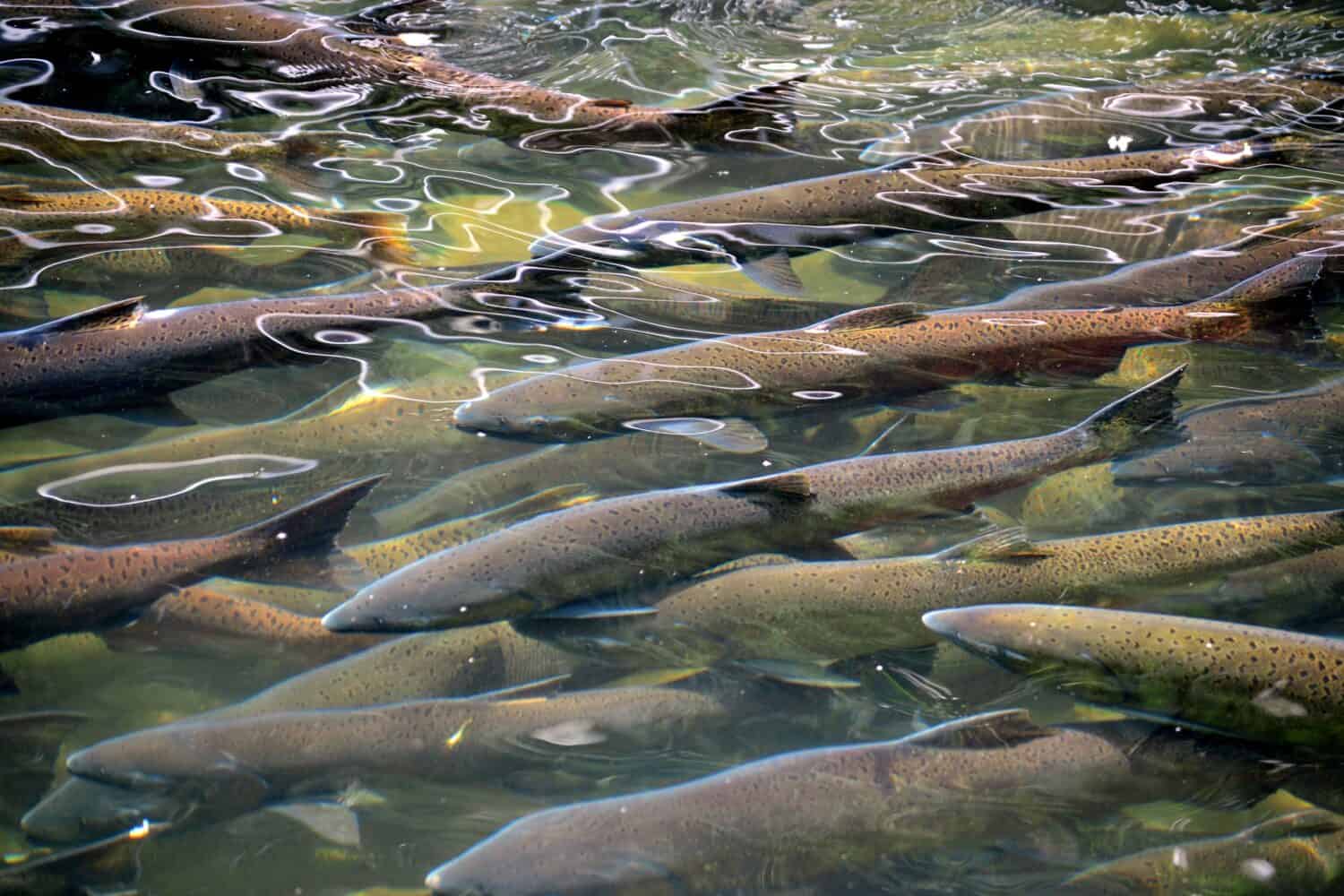
Salmon change colors throughout their lifetime.
Image: Jennifer Nicole Buchanan, Shutterstock
©Jennifer Nicole Buchanan/Shutterstock.com
Salmon scales are a gleaming silver sheen with pockets of blue, crimson, purple, pink, or green most of the year, but when the spawning season is near, the scales change to a rainbow of colors.
Over their lifespan, salmon can be in three diverse colors. For instance, sockeye salmon are light-colored and speckled as juveniles; then, they turn silvery blue as adults in the ocean. The adult bodies turn a blazing red, and their heads become green when they are ready to spawn. Salmon change color to entice a spawning partner.
5. A Female Salmon Can Carry Over 4,000 Eggs
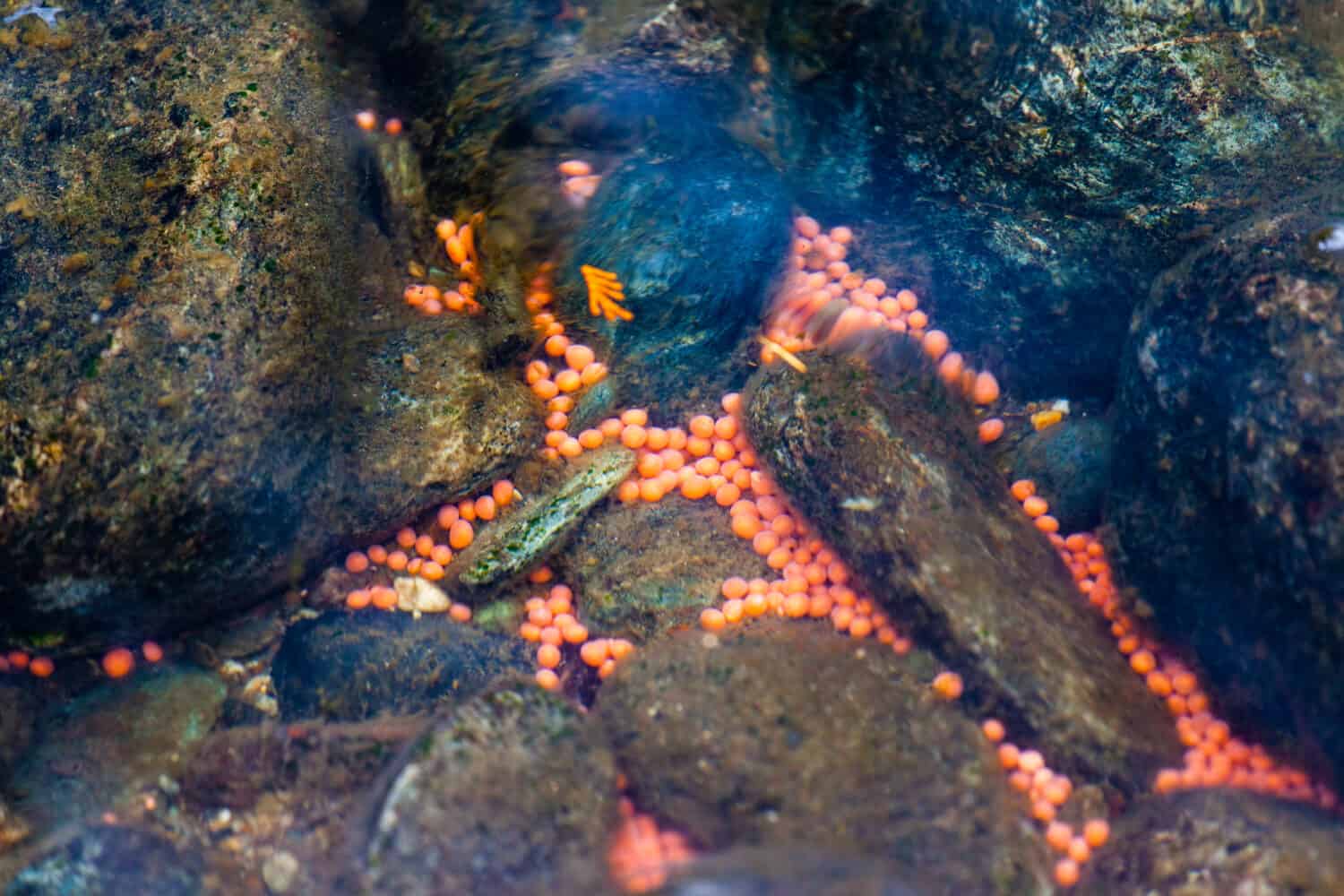
Out of thousands of eggs produced by a female salmon – only 0-10 will develop into adulthood.
Image: Ronnie Chua, Shutterstock
©Ronnie Chua/Shutterstock.com
Between 1,500 to 10,000 eggs can be produced by a female salmon. Only a handful of these eggs (0 to 10) will develop into adult salmon. On average, a population of the same size produces one adult from each parent (two adults out of each spawning pair), but this will vary yearly.
6. Salmon Can Range in Size from 3 to 126 Pounds
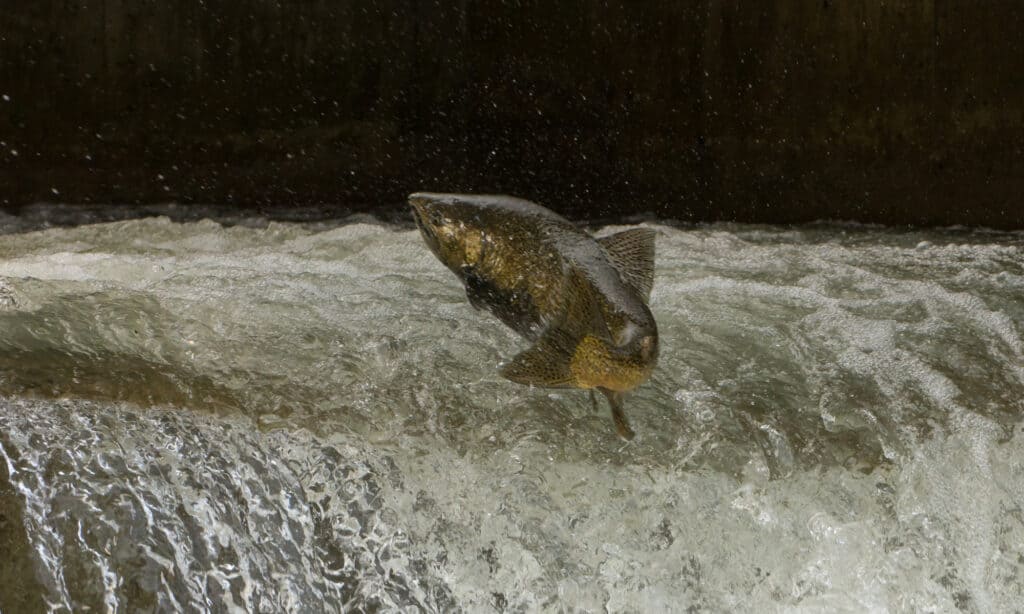
Chinook salmon are the largest salmon.
©Evan Linnell/Shutterstock.com
The Chinook/King Salmon is the largest, reaching a maximum size of 6 feet long, weighing 126 pounds. While the chinook is the largest fish in North America, Asian species are larger.
Pink salmon are the tiniest and can grow up to 30 inches long and weigh up to 12 lbs (average 3 to 5 pounds)
7. After Spawning, Many Salmon Perish
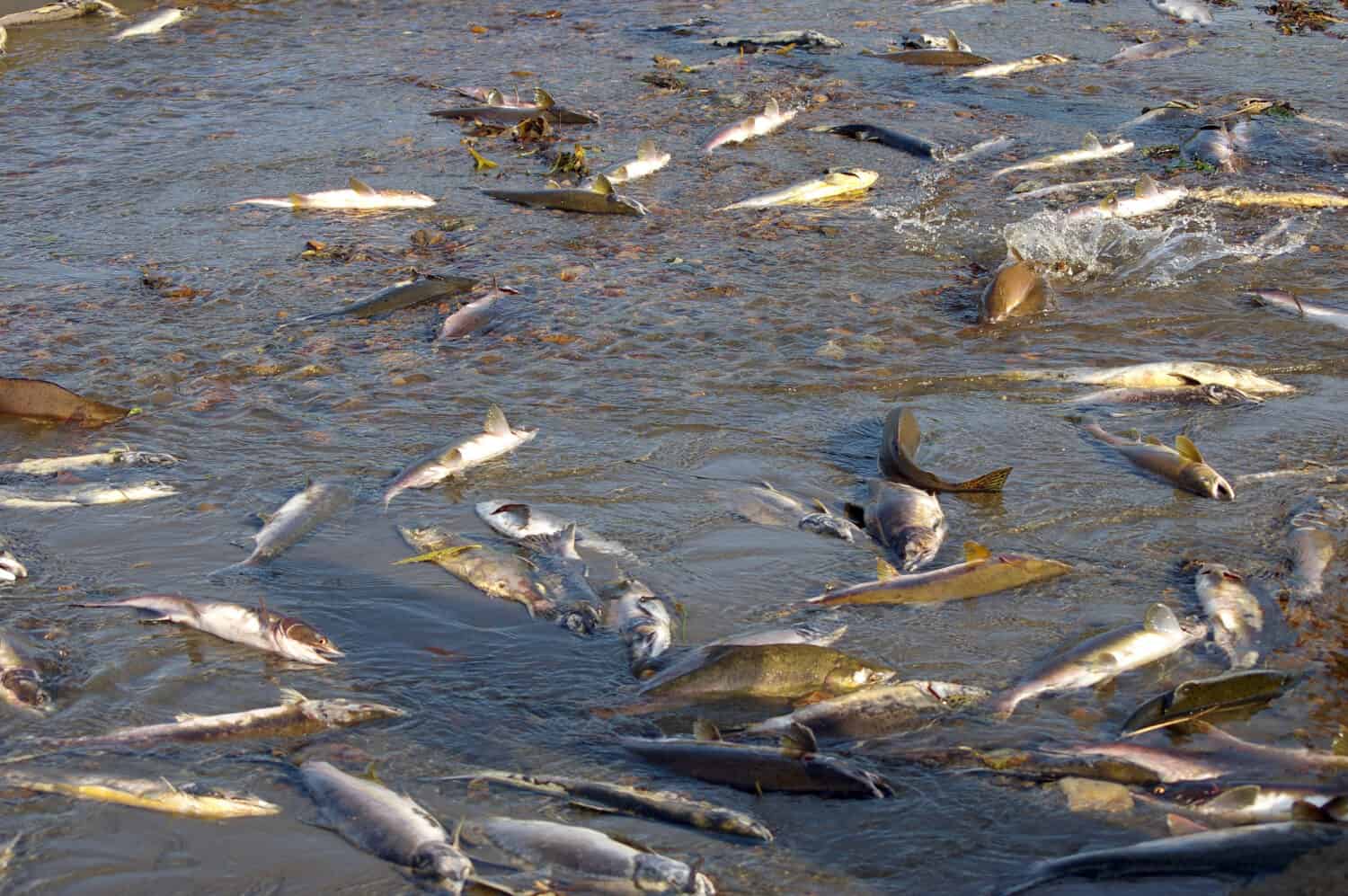
Many salmon do not survive the arduous spawning process.
Image: RedTC, Shutterstock
©RedTC/Shutterstock.com
Salmon devote all their energy to traveling to their home stream, producing eggs, and constructing a nest. When salmon return to fresh water, they stop feeding and have no power to return to the ocean after spawning. Other creatures consume them after they die (but not humans) or decay, providing nutrients to the stream. On the other hand, steelhead trout continue to feed in freshwater, and many survive and journey to the sea. These fish can grow for another year before returning to reproduce.
8. Predators in the Ocean Are Confused By Salmon Schools
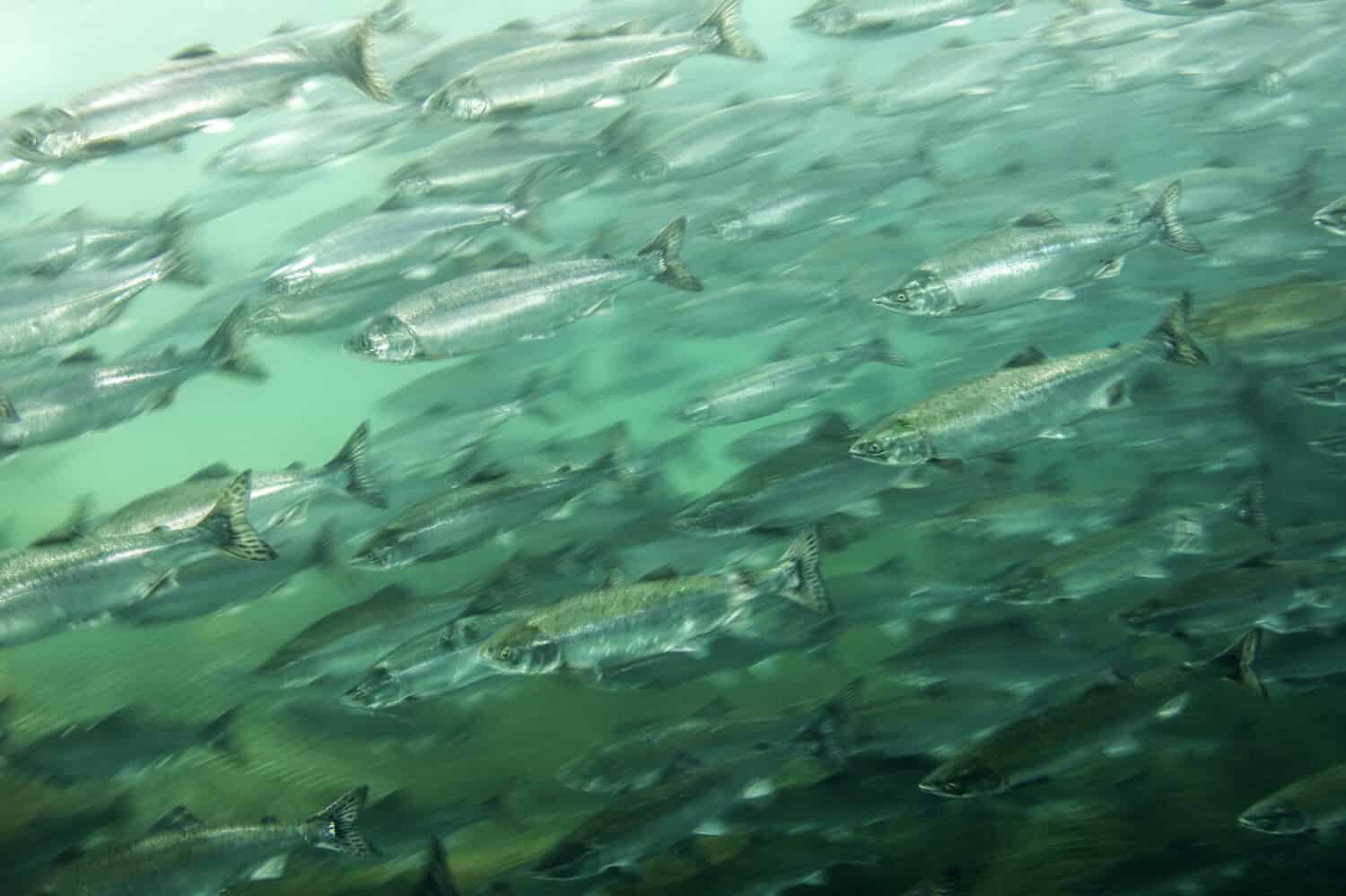
Large schools of shiny salmon appear to be one giant fish – confusing predators in the ocean.
Image: Konstantin Novikov, Shutterstock
©Konstantin Novikov/Shutterstock.com
Because of the salmon’s changing size and surroundings, its predators alter during different times of its lifecycle.
Some salmon congregate in a school in the ocean, where their shiny sides confuse predators and cause them to be mistaken for a single enormous predator. Other birds, fishes, snakes, and members of their species, devour salmon fry.
When traveling, salmon are more vulnerable to predators. Thus they seek refuge in deep ponds. Salmon are prey to seals, killer whales, sea lions, dolphins, other fish, and, of course, people once they reach the ocean.
Bears and birds are prone to snatching spawning salmon when they return to the stream where they were born.
9. Salmon Can Leap Vertically over Waterfalls
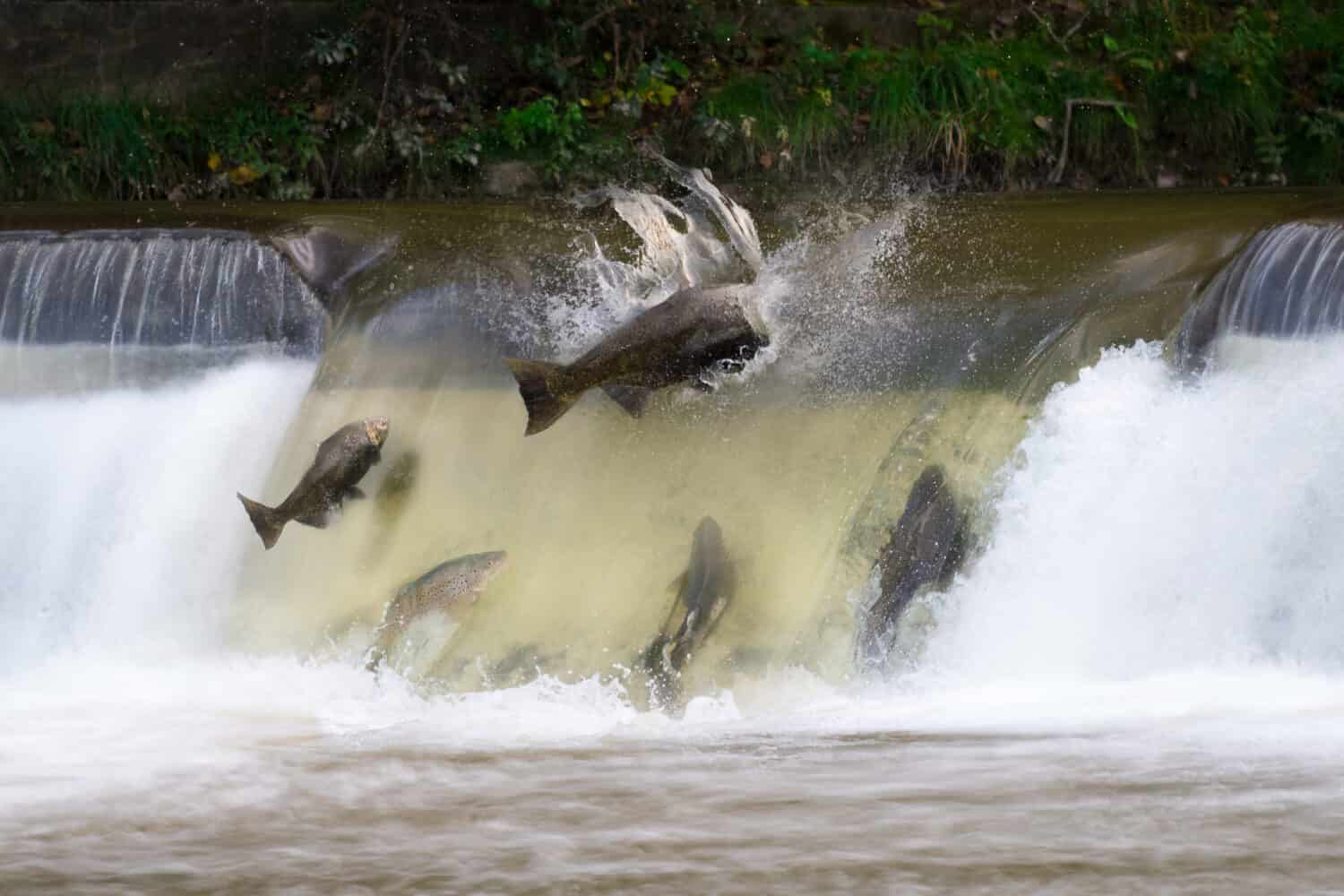
Salmon can jump up to 12 feet vertically in rapid waters.
Image: Canadapanda, Shutterstock
©Canadapanda/Shutterstock.com
After several years of roaming vast distances in the sea, most surviving salmon journey to the same natal rivers where they were born. The majority of them then swim up rivers to their natural spawning grounds.
Salmon leap or jump their way through waterfalls and rapids. Vertical jumps of up to 3.65 meters have been reported (12 ft). A salmon’s jumping height is determined by the position of the standing wave or hydraulic leap at the bottom of the fall and the depth of the water.
10. “Zombie Salmon” Exist
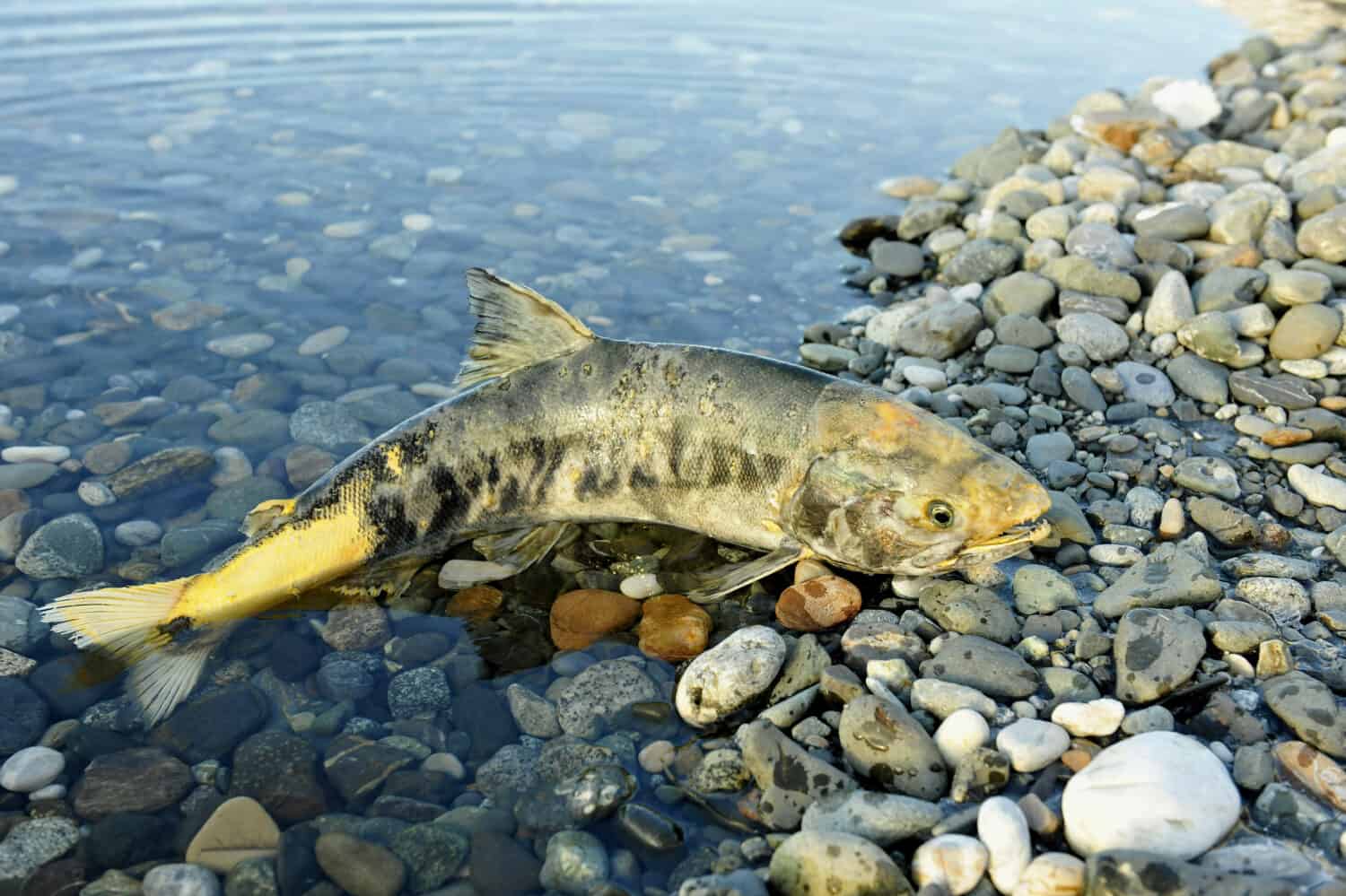
Salmon on the verge of death are called zombies.
Image: Sergey Uryadnikov, Shutterstock
©Sergey Uryadnikov/Shutterstock.com
Salmon with decaying flesh, sharp teeth, and hooked noses are known as “Zombie Salmons.” They aren’t zombies. However, they are salmon on the verge of death. When salmon return to their birth streams to spawn, they stop eating and expend all of their energy on getting to their spawning grounds to procreate, earning the nickname “zombie salmon.”
The photo featured at the top of this post is © azure1/Shutterstock.com
Thank you for reading! Have some feedback for us? Contact the AZ Animals editorial team.



